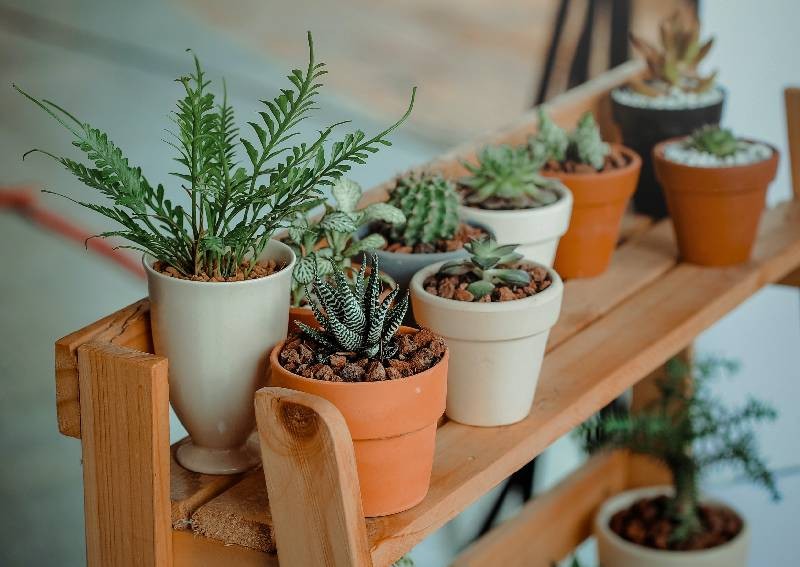Is your plant in bad shape? Here's how to troubleshoot

We’ve probably all been there - excitedly bringing home a lush and healthy plant from a trip to the nursery, only to watch it fall into decline with every passing week. And before we’ve figured out what went wrong, the plant has turned to mush, or withered beyond hope and it’s time to say goodbye.
I’m not going to lie - I must have killed at least a dozen innocent plants before I finally got the hang of tending to my indoor garden. And it definitely takes more than pouring tap water straight into the pots to keep houseplants alive.
Here, I share some common early signs to look out for, and tips on how to decode your plant’s silent cry for help before it’s too late.
[embed]https://www.instagram.com/p/CNyMQ1NDXOu/?utm_source=ig_embed&ig_rid=18edbd83-461d-43f3-b6ed-721a52ebd455[/embed]
Ugh.. Don’t we all hate that. Are all the leaves drooping, or is the stem starting to turn mushy from bottom up? Stick a chopstick or finger into the potting mix to see if it’s dry - it could be a simple issue of needing a good drink. If the potting mix is damp and the situation persists, it’s time to get to the root of the issue (quite literally) by checking to see if it’s a case of root rot.
[embed]https://www.instagram.com/p/CLpHJY_giGR/?utm_source=ig_embed&ig_rid=29383dba-4b6c-4bb1-84b0-2580ecb8ed89[/embed]
If it is a case of the fungal infection, you’ll find that the roots are mushy, blackened and easily fall off with a slight tug. Remove as much of the rotten parts as you can and give the plant a good rinse. If enough roots remain, repot the plant in a clean pot with fresh potting mix. Otherwise, place it in a jar of clean water with rooting tonic and let it recuperate.
[embed]https://www.instagram.com/p/CXjjlIEMVhR/?utm_source=ig_embed&ig_rid=4266e618-34a9-4367-aedf-8d9e90a0d053[/embed]
Before you hit the panic button, an occasional bottom leaf yellowing is a natural process, and isn’t cause for concern. But if you’re starting to see it happen frequently, it could be caused by too much sun exposure, or watering the plant too little or too much. Try shifting it to a shadier spot or adjusting its watering schedule and monitor its progress.
[embed]https://www.instagram.com/p/CTaUvbsPQ9W/?utm_source=ig_embed&ig_rid=b5313d62-4155-4d1d-9f85-76ad040aefa2[/embed]
If you’ve noticed that your plants are starting to have a spindly appearance with long and weak stems, it’s probably a sign that they are receiving inadequate light and are trying to reach out for more. Try placing them in a brighter spot and see if they start growing bushier instead.
Is your plant putting out significantly smaller leaves, or not showing any new signs of growth? Whilst this can be caused by several reasons, the common ones that inhibit robust growth are either a lack of sunlight, nutrients or root rot.
Rule them out one by one and see which one could be the culprit. If it’s a lack of nutrients, add a sprinkling of slow-release fertiliser onto the potting mix and your plant should bounce back in a couple of days.
Generally, leaf tips will start browning when your plant is not getting the water it needs for some reason. This could be due to under- or over-watering. Or If this occurs after a recent round of fertilisation, you could have been a little heavy-handed with your application.
Brown tips on leaves could also be a sign that the air is too dry, and your plant needs more humidity. To increase humidity levels naturally, place your plants closer together, or place your plant on a tray of pebbles with water. With that said, do replace the water regularly to prevent mozzies from breeding, and make sure there’s good air circulation.
[embed]https://www.instagram.com/p/CMSN_qogwhf/?utm_source=ig_embed&ig_rid=dbccccd7-2e16-44d8-930f-a9914e4bf7f4[/embed]
Leaf spots, which often appear as dark brown circles, can be a sign of fungal or bacterial disease - this is usually caused by poor air circulation and moisture. As soon as you see them on your houseplants, cut off the affected leaves and isolate the pots to prevent the disease from spreading to other plants.
If you’re seeing tiny spots instead, giving your leaves a mottled appearance, it could be those pesky spider mites at work. Let them hang around long enough and you may find a fine layer of dusty-looking webbing on your plant too. Give your affected plant a good rinse and spray it liberally with a miticide of your choice. Repeat the spraying over a couple of days.
ALSO READ: Got yourself a rare variegated plant? Here's how to help it thrive
This article was first published in Wonderwall.sg.